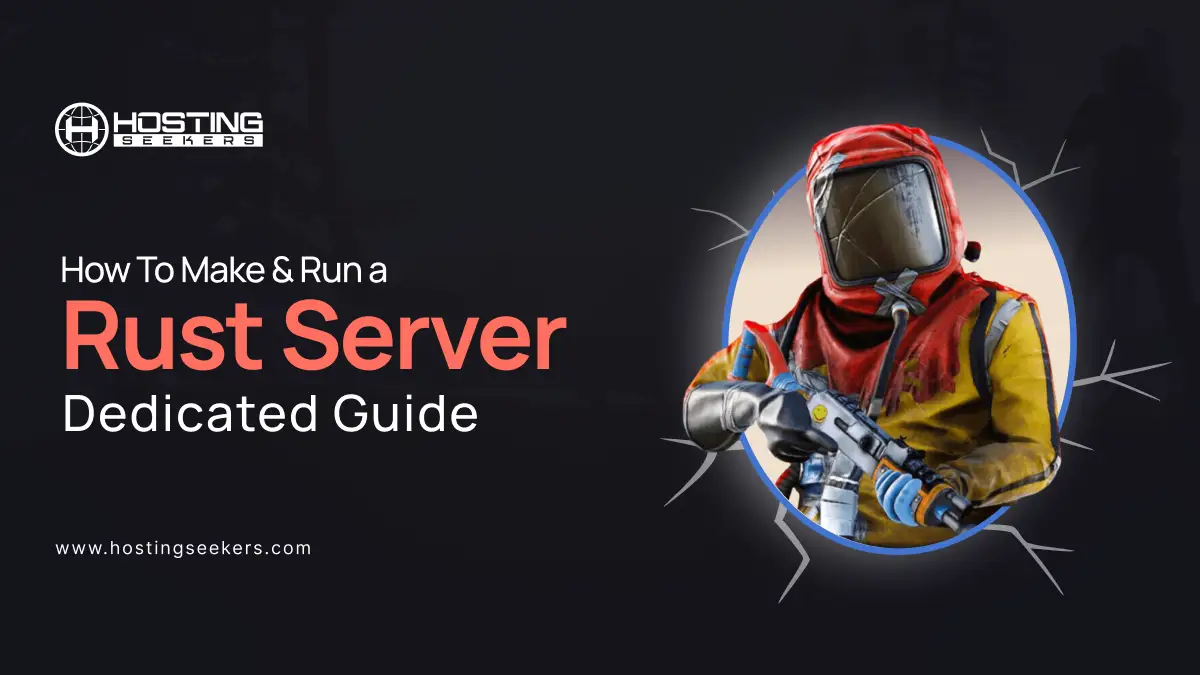
How To Make & Run a Rust Server – Dedicated Guide
IT Updated on : September 1, 2025If you are a Rust enthusiast and want to create a space where friends or a community can play together, a dedicated server is the solution. You will get the power to play as you want, select mods, and define the rules of your community.
If you require a world accessible only to your close friends, customized settings, or an open server, this tutorial will guide you step by step and provide you with all the necessary information.
Why Run Your Own Rust Server?
Managing a Rust server sounds difficult, but you get a lot from it:
- Complete control: Change PVE or PVE, loot percentages, add in-game commands, and overlays.
- Community development: Build a server for streaming days, friends, followers, or a broader public audience.
- Functionality: Upgrade equipment to eliminate lag and smooth play.
- Modification: Utilize mods and maps to enhance the typical Rust gameplay and introduce new experiences.
A dedicated server can change Rust from a typical survival game where you have fun at the Rust item store into an entirely custom-made sandbox according to your idea.
Step 1: Choose Your Hosting Setup
There are two main hosting choices that you can pick from.
- Hosting it on your computer or with the help of a spare one, and thus, you are doing self-hosting. This is the most excellent option for a private or small group game. It is imperative that you have a good Internet Connection, a strong upload speed, and your device must be turned on all the time if you want the server to be accessible.
- Signing up for a hosting service and getting a dedicated server from the provider is another choice. Public servers or large community-based games are best suited for this option. It is not free, but it provides you with stable hardware, increased bandwidth, and a support team to assist you in case of any system issues.
Self-hosting is sufficient if you are testing out your ideas. However, a dedicated server that is rented is generally a better choice for a public community or a project that lasts for a long time.
Step 2: Understand System Requirements
To have Rust operating harmoniously without any hiccups, the machine should have decent hardware. You will likely require a PC with a quad-core processor, 8 GB of RAM, and at least 20 GB of free space on an SSD.
However, if your server is large or modded, it is recommended to use 16 GB of RAM or more. Moreover, a stable and reliable wireless connection with a high upload speed is a basic requirement. Both Windows and Linux (particularly Ubuntu or Debian) are supported. Yet, in the case of server environments, Linux is chiefly considered for its stability.
Step 3. Initializing a New Rust Server
Namely, SteamCMD is a required tool for installing a game server, such as Rust. This utility can manage multiple game servers simultaneously, updating and downloading them. As soon as it is set up, through a startup file, your Rust server will be configured.
The startup file will be where your server retrieves the name, the number of players, the map dimension, and the frequency at which the server saves the game’s progress.
The critical variables to be set up in your configuration file are:
Obviously, it is the title of the server; the players will get acquainted with the server name when they glance at the list of available servers for a match.
- The limit of the maximum number of players on the server.
- Settings related to map generation, such as world size and random seed.
- Creating a unique server identity will help keep the stored video game data.
Step 4: Network Configuration
If you are hosting it by yourself, it is necessary to configure your router so that other players can connect to you. This is achieved by forwarding the exact ports Rust is using.
If this is not done, access to the server will be available only to you. The host provider, in the case of the server for rent, usually carries out this work automatically. This is just one of the many reasons why players love this approach.
Step 5: Adding Admins and Moderation
Managing a server is part of the whole package. If you want friends or players who can rely on them to help moderate the server, then you can grant them administrator privileges.
Through that, they will be able to kick out annoying players, check what is happening in the server, or even create items for testing purposes. This access must be granted only to people you trust, as they will have the most control over the server environment.
Step 6: Installing Mods and Plugins
The most significant advantage you have as a Rust server owner is the possibility of installing custom mods. This is accomplished through the uMod system (formerly known as Oxide).
With uMod, you can introduce various features, such as teleport commands, player economies, events, and enhanced anti-cheat systems. Nevertheless, having too many plugins can considerably slow down your server, so it’s best to select the ones that match the type of game you wish to offer your players.
Step 7: Ongoing Maintenance
A server in Rust is a service that requires regular maintenance to remain healthy and functional. In fact, you will need to update the game very often, as new patches can make servers incompatible.
You must also regularly back up your server data to ensure safety in case it crashes or files become corrupted. Many public servers have a schedule for monthly wipes, where the map is cleared to keep the gameplay fresh and balanced. Lastly, by being part of the community, you maintain contact, and good communication is what brings players back.
Tips for Success
- Start Small: Begin with fewer players and expand as your server grows.
- Utilize your resources effectively: to boost your server’s popularity, server lists, Discord groups, or social media are straightforward ways to attract more players to your server.
- Be consistent: A smooth, lag-free experience will always keep your server’s population at a high level rather than a server with many flashy plugins.
- Help your community feel better: By providing players with the opportunity to be heard, you can create a more enjoyable server experience.
Final Thoughts
Creating the Rust server and then managing it may initially result in feeling overwhelmed, but it is still a very satisfying process. If done correctly, you can develop a more stable world, designed with your own preferences, and also make it fun to play with a group of your closest friends or a large community of random players.
Whether it is a private or public, self-hosted or rented server, it will become the destination where players will return again and again.
Rust server basics, making, and managing have been introduced to you. What follows is finding a way to translate your ideas into reality and begin constructing the ultimate Rust masterpiece.




